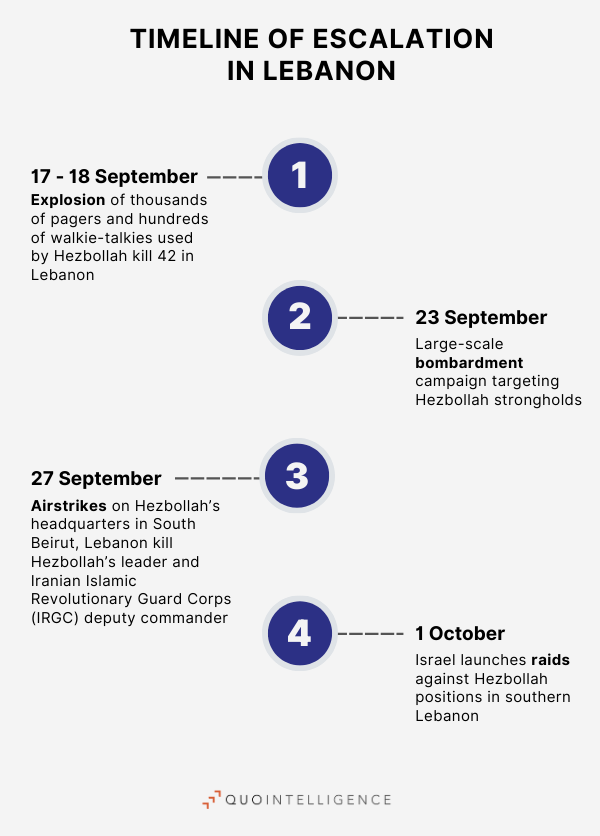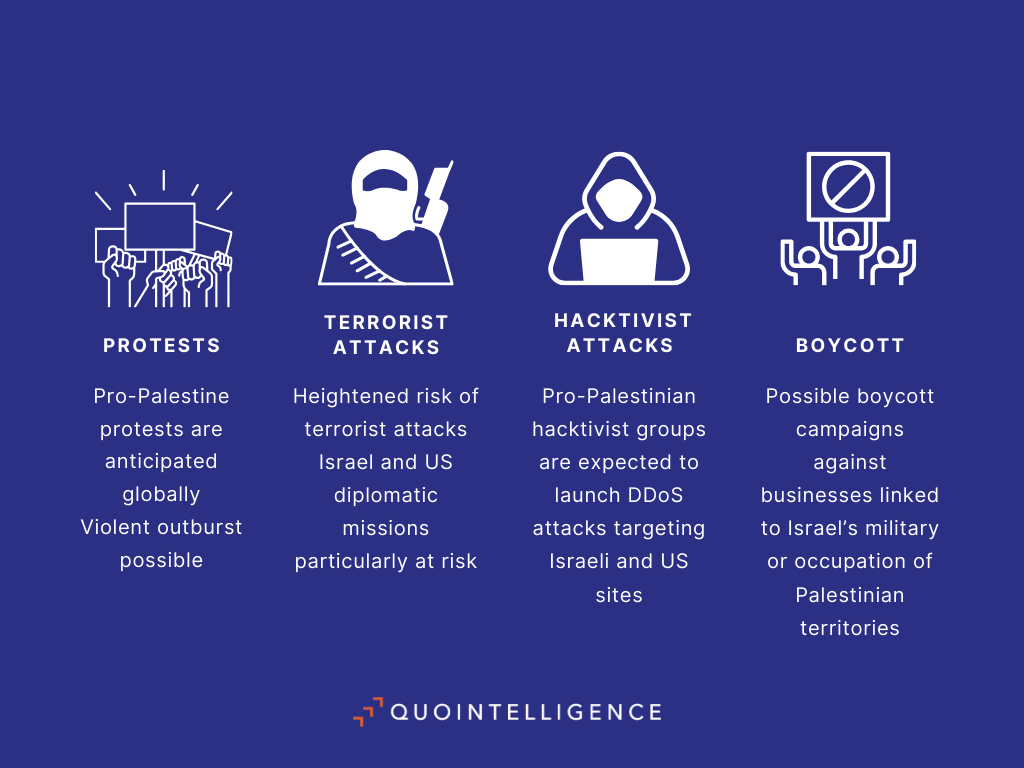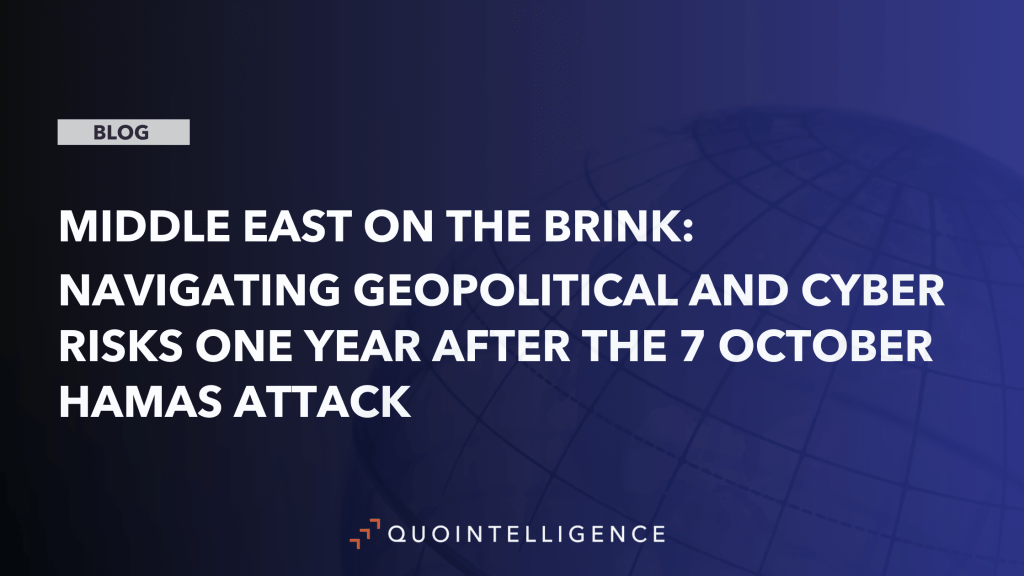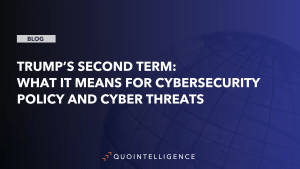On 7 October 2023, Hamas and its ally, the Palestinian Islamic Jihad, launched a coordinated land, air, and sea attack against Israel. Hamas launched thousands of rockets against the Israeli territory. Additionally, more than 1000 combatants infiltrated several locations within Israel, shooting at civilians and military personnel and capturing others to hold them hostage in Gaza. The attack caused 1,269 victims, mainly among civilians, representing the deadliest attack in Israel’s history.
One year after the attack, the situation in the Middle East has changed dramatically. Tensions are at their highest point in years and threaten to spiral into regional war. This article analyzes the ongoing conflict, the risks of regional escalation, and the surge in cyber warfare, offering insights into future security developments in this volatile landscape.
Key Insights
Our main takeaways and key findings in this article include:
- The rules of engagement of Israel and Iran are becoming increasingly blurred, raising the likelihood of further escalation into a regional conflict.
- Israel’s operation in Lebanon illustrates a decisive shift in its strategy, characterized by an increasing appetite for risk and the will to change the regional order.
- In cyberspace, the ongoing conflict has sparked a surge in pro-Palestinian hacktivism, along with increased Iranian state-sponsored cyber operations targeting Israel.
- The upcoming anniversary of the 7 October 2023 attacks is highly likely to trigger global mobilization, leading to worldwide demonstrations, hacktivist activities, and potentially violent actions, including terrorist attacks. Israeli and US entities are particularly at risk in this context.
- European companies are unlikely to be directly targeted unless involved in strategic or governmental projects in Israel or the Middle East. However, they should heighten vigilance, actively monitor developments, prepare business continuity plans, and take proactive measures to ensure the safety of their personnel.
Widening Crisis: Tensions Expands Beyond Gaza
Over the past year, the Israeli-Palestinian conflict has taken a more intense and dangerous turn, with significant implications for regional stability.
The ongoing Israeli operations in Gaza have resulted in large-scale loss of life and sparked reactions across the Middle East. Gaza’s Ministry of Health reported over 40,000 Palestinian casualties by September 2024, with more than 10,000 still missing.
Hezbollah in Lebanon and the Houthi movement in Yemen have emerged as key players, with direct actions against Israeli targets. Hezbollah has consistently launched rocket, drone, and mortar attacks on Israeli territory, forcing evacuations along Israel’s northern border. Meanwhile, Houthi militants have been targeting merchant vessels in the Red Sea in retaliation for Israel’s operations in Gaza. These actions have disrupted maritime trade, sinking two ships and forcing major shipping routes to divert from the Suez Canal, which is critical for global supply chains between Europe and Asia.
The conflict’s reach also extends to Iran, as rising tensions with Israel have resulted in a cycle of direct strikes on one another’s territory, a first in their long-standing rivalry.
Cyber Front: Surge In Cyber Activities Targeting Israel
In cyberspace, the conflict has generated a surge in pro-Palestine hacktivism. Hacktivists from the Middle East, Asia, and even pro-Russia factions have launched Distributed Denial of Service (DDoS) attacks, doxing campaigns, and information leaks targeting Israeli government sites and critical infrastructure. As seen in the framework of the war in Ukraine, pro-Palestine hacktivist groups are also targeting countries supporting Israel, especially the US and India. Following 7 October 2023, Indian hacktivist groups took part in targeting Palestinian and Iranian websites. They have now reverted to their usual targets.
In addition to hacktivist activities, Iran has ramped up state-sponsored cyber operations. Iranian cyber groups linked to the Islamic Revolutionary Guard Corps (IRGC), such as CyberAv3ngers and APT42, as well as those associated with the Ministry of Intelligence and Security (MOIS), including MuddyWater, have targeted Israeli government agencies, defense firms, and academic institutions. These attacks have included destructive malware, phishing campaigns, and information warfare. While Israel’s cyber operations have been less visible, a significant Israeli cyberattack in December 2023 caused widespread disruption to Iran’s gas stations, highlighting Israel’s advanced cyber capabilities. The scarcity of reports on Israeli operations may be due to victims avoiding disclosure to prevent appearing vulnerable. Additionally, some state-sponsored operations aim to remain undetected for a long period. Furthermore, threat intelligence reporting is often biased, as much of it is produced by Western sources, which may focus less on Iranian targets.
Expanding Frontlines: War Reaches Lebanon

September 2024 marked a major escalation in the conflict, with Israel extending its military operations into Lebanon. On 17 and 18 September 2024, thousands of pagers and hundreds of walkie-talkies used by Hezbollah exploded simultaneously across Lebanon and Syria in a likely Israeli attack. Lebanon’s ministry of health reported that in total 42 were killed and almost 3,500 wounded by the blasts.
This unprecedented attack marked a new phase in the conflict opposing Israel to the Axis of Resistance. Israeli Prime Minister Benjamin Netanyahu confirmed this shift by announcing the expansion of Israel’s war goals to include enabling Israelis who have fled areas near the Lebanese border to return to their homes. Israel then launched a large-scale bombardment campaign targeting Hezbollah strongholds, resulting in over 1,800 deaths and the displacement of over 1,000,000 people by the end of September.
On 27 September 2024, a major development occurred in the ongoing Israel-Hezbollah conflict as the IDF launched airstrikes on Hezbollah’s headquarters in South Beirut, Lebanon, killing Hassan Nasrallah, Hezbollah’s influential leader, along with Iranian Islamic Revolutionary Guard Corps (IRGC) deputy commander Abbas Nilforoushan. This strike significantly impacted Hezbollah’s leadership and marked an escalation in Israel’s military campaign.
Following this, on 1 October 2024, Israel further intensified its operations by launching raids it described as limited, localized, and targeted against Hezbollah positions in southern Lebanon. These incursions encountered strong resistance from Hezbollah militants, leading to fierce fighting.
On the same day, Iran launched a missile attack on Israel, citing retaliation for the assassination of Hamas and Hezbollah leaders and the aggression in Lebanon and Gaza. The attack involved more than 180 ballistic missiles, prompting Israel to activate its air defenses, which intercepted most of the projectiles.
On the Brink: Middle East Edges Closer to Regional War
As the situation in the Middle East is increasingly volatile, the risk of further regional escalation looms large. Israel is engaged in several fronts, with continued airstrikes on the Gaza Strip and a ground operation in Lebanon. Israel also recently conducted strikes against Houthi targets in Yemen and has vowed to retaliate for Iran’s missile attack. Overall, Israel’s latest military actions illustrate a decisive shift in its strategy, characterized by an increasing appetite for risk and the will to change the regional order. Israeli operations in Lebanon are likely to continue in the short to medium term, as Israel is in a favorable position and likely sees no reason to halt efforts aimed at securing the safe return of its citizens in the northern part of the country.
Meanwhile, Iran faces a challenging balancing act. Tehran needs to reinforce its credibility with its proxies and maintain its deterrent posture against Israel, while avoiding direct confrontation with either Israel or the US and ensuring domestic control over its population. As of 2 October 2024, the Iranian regime appears to maintain a relatively cautious approach. Nevertheless, it could be forced to revise its posture to keep up with Israel’s growing risk appetite.
The Houthis will very likely continue to disrupt maritime traffic in the Red Sea, affecting critical supply chains. The movement is also likely to launch occasional missile attacks against Israel. Similarly, Shia militant groups in Iraq and Syria will likely conduct some limited attacks on US bases and the Golan Heights.
As the rules of engagement are getting blurrier, the security situation in the Middle East is becoming more uncertain and volatile.
Anticipating the 7 October 2023 Anniversary: A Likely Catalyst for Protests and Hacktivism

Pro-Palestine protests are anticipated across the Middle East, North Africa, and Asia, with anti-Israel and anti-Western sentiments running high. These protests may turn violent, particularly in Iraq. Public and private entities associated with Israel and Western countries, particularly the US, are urged to remain vigilant. We recommend that public and private entities linked to these two countries and other Western nations actively monitor the situation and prepare for possible violent crowds. We also expect some peaceful rallies to take place in Western countries around 7 October 2024. Display of violence is unlikely, but clashes with law enforcement cannot be ruled out.
As the 7 October 2023 anniversary approaches, there is a heightened risk of terrorist attacks. This date offers increased visibility for extremist groups to stage high-profile actions. Organizations like ISIS and Al-Qaeda could plan large-scale attacks, while smaller, decentralized groups or lone individuals may also seek to carry out violent acts. Israel and US diplomatic missions, as well as other entities linked to these countries, are particularly vulnerable to such threats.
On the cyber front, pro-Palestinian hacktivist groups are expected to launch renewed DDoS attacks targeting Israeli government sites and US-linked entities. Though these cyberattacks may cause disruptions, their impact is likely to be limited. European companies are unlikely to be affected unless they are involved in strategic and/or governmental projects in Israel and the Middle East.
The 7 October 2023 anniversary could also trigger new or revitalized boycott campaigns. Pro-Palestinian groups and human rights organizations may leverage this moment to rally support for economic boycotts against multinational corporations deemed complicit in Israel’s military operations or its occupation of Palestinian territories. While the financial impact is often uncertain, the reputational risks can be significant.





